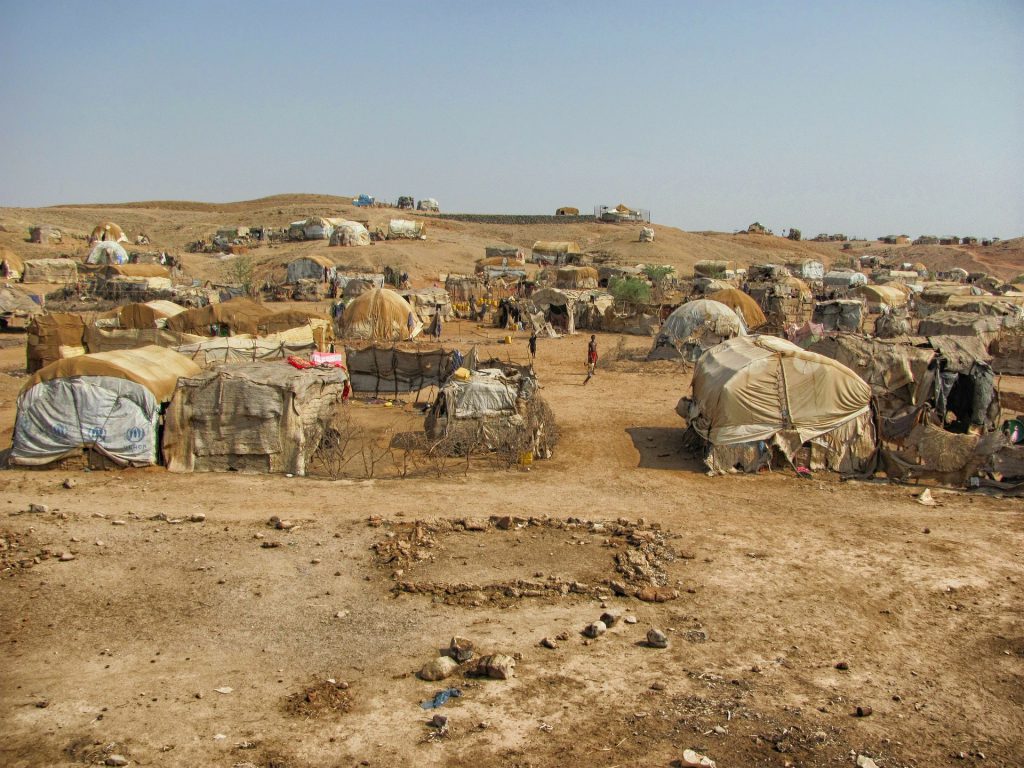The New Humanitarian reports that Ethiopia- despite domestic and global concerns surrounding the emerging COVID-19 pandemic- publicly announced in April that it planned to transfer Eritrean refugees from Hitsats refugee camp to two others, Adi Harush and Mai Aini, in Tigray. These two locations are known to be overcrowded and therefore unfit for an influx of more refugees- the United Nations High Commissioner for Refugees responded to this controversial and potentially dangerous plan of action by stating that the transfer could “expose the refugees to the risk of COVID-19 infection and outbreak in the camps.”
Already, as a result of the overflowing capacity in Eritrean refugee camps in Ethiopia, refugees are suffering from insufficient food and water supplies, placing them in a position of susceptibility and vulnerability to the virus which flourishes in cramped, unclean, and unhealthy conditions. Unfortunately, however, Eritrean refugees who are attempting to escape abhorrent human rights violations have no other place to go in Africa. According to the U.S. Committee for Refugees and Immigrants (USCRI):
“Very few countries are resettling Eritrean refugees. In 2015, UNHCR submitted resettlement applications for 1,000 refugees, including 100 unaccompanied children, who are living in the Shire camps. UNHCR’s resettlement referral target for all of Ethiopia was 5,965 in 2015. The United States conducts almost all resettlement of Eritrean refugees. In fact, the USCRI delegation was informed by a UNHCR official in Shire that the United States carries out approximately 97 percent of Eritrean refugee resettlement. In 2015, the United States resettled 1,783 individuals of Eritrean origin. In contrast, Canada accepted a mere 142 refugees of Eritrean origin during the first six months of 2015.”
In cases in which Eritrean refugees are unable to safeguard a passage to the United States, their only viable option is to flee into adjacent nations, such as neighboring Ethiopia. Even this option, however, is dreary. Children and girls are often trafficked en route to the camps, and in the cases that these vulnerable Eritrea refugees do make it to Eritrean camps, they are faced with inadequate nutrition and water supply. Refugees live in crowded shelters of mud and dirt, and are exposed to extreme seasonal temperatures and climate conditions. Clothing and female sanitary products are extremely limited, and children have no access to educational or recreational facilities.
The following should be the greatest indicator of the increasing risk of exposure to COVID-19 for Eritrean refugees in Ethiopia:
“Health services and medical supplies are limited. The most common illnesses and ailments in the camps include malaria, diarrheal diseases, upper and lower respiratory tract infections, urinary tract infections, and other gastric disorders. In addition to treatment for these physical conditions, refugees are in desperate need of mental health services.”
In Ethiopia, refugees from Eritrea have escaped an intractable and reprehensible situation in their home country for only slightly better- and even sometimes equally disastrous- conditions in Ethiopia. Now, however, the fears of coronavirus have come to fruition: one 16-year-old girl at Adi Harush camp tested positive for COVID-19 in June, and the number has slowly but surely increased on a daily basis. As concerns over and cases of COVID-19 have grown, Ethiopia has not moved forward with its decision to close Hitsats camp and transfer refugees to Adi Harush, nor has it released any information on its current plans:
“The lack of clarity makes it difficult, notably for humanitarian actors, to assess the impact and plan for any viable, safe alternatives…creating significant confusion and fear for the Eritrean camp residents.”
Image by David Mark from Pixabay

